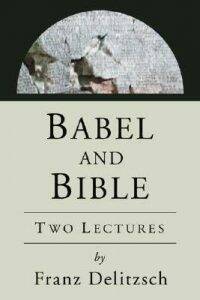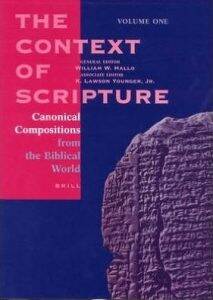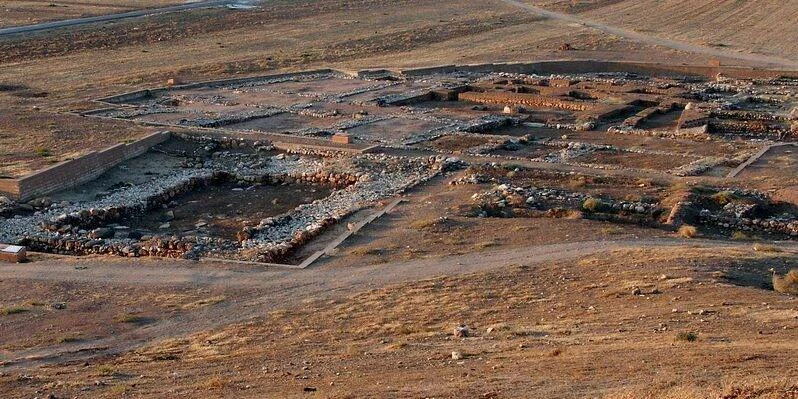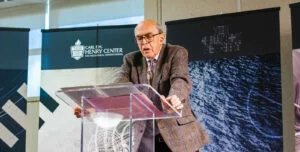In my previous post I discussed the value of using ancient Near Eastern (ANE) texts to sharpen and enhance our understanding of the world of the Old Testament.
In terms of the Creation Project, I want to explore ANE texts that address cosmology in order to understand better how the ancient Israelites might have interpreted Genesis 1. In this post I would like to explore the following questions: How do we go about comparing these ANE extra-biblical materials with what the Bible says about creation and other matters without imposing the ancient world on the Bible? What do we need to watch out for?
Borrowed from Babylon?
The rediscovery and recovery of the material remains that we have reviewed briefly in the previous post began in earnest early in the 19th century and continues until today, about two centuries in all. In the meantime, scholars have taken steps to bring it to bear upon our reading of the Bible. Some of these steps have turned out to be missteps, so we have needed to retrace ourselves and take other more fruitful paths, using the same material in more sound ways.
 One of the most famous missteps took place at the end of the 19th and into the early 20th century with the Babel und Bibel lectures given by Friedrich Delitzsch, an Assyriologist. The first two of the three lectures were sponsored by the Kaiser of Germany, but the uproar was so great that he withdrew his support for the last one. Unfortunately, Delitzsch tended to treat much of the OT as if it was simply borrowed from the Babylonians and inserted into the Bible, albeit with a Hebrew veneer overlaying it.
One of the most famous missteps took place at the end of the 19th and into the early 20th century with the Babel und Bibel lectures given by Friedrich Delitzsch, an Assyriologist. The first two of the three lectures were sponsored by the Kaiser of Germany, but the uproar was so great that he withdrew his support for the last one. Unfortunately, Delitzsch tended to treat much of the OT as if it was simply borrowed from the Babylonians and inserted into the Bible, albeit with a Hebrew veneer overlaying it.
This early episode set the whole discussion off in a wrong direction, and we have still not recovered from the effects of it today. At one extreme, errors of method continue to show up in the scholarly literature, in which it is sometimes said, for example, that for all intents and purposes, the Bible “borrows” from the world of the ANE and, in effect, “adopts” its perspectives wholesale. This is part of what has sometimes been called “parallelomania.” At the other extreme, there has been a reaction against the use of these ANE texts and pictures to help us understand the Bible, and a suspicion of those who do. Here the term “parallelophobia” is apt.
The fact of the matter is that the Bible simply reflects that it was written within that environment. The ancient Israelites were ancient Near Easterner people. There was a good deal of connectedness across and between large regions of the ANE from a very early time—even back to the “the primeval period,” before Genesis 12. We can see this, for example, from the relatively recent discoveries at Ebla in northern Syria, which date from about 2450 BC (over four centuries before Abraham). This connectedness lent itself to the development of what we might call “common cultural foundations” across the ANE world.
It is also true, however, that there were distinct peoples with their own languages and literatures from the east to the west, south to north. Similarly, ancient Israel had its own peculiarities, so we must be wary of imposing things on the OT from its ANE world that the Bible itself really does not support. Nevertheless, God revealed himself through human authors who lived in that world to readers who shared the same broad common cultural background. He met the ancient Israelite readers where they were, but he also took them where they needed to go from there. This is how communication works—divine revelation too.
God revealed himself through human authors who lived in that world to readers who shared the same broad common cultural background. He met the ancient Israelite readers where they were, but he also took them where they needed to go from there.
Method Matters!
The “comparative contextual method” is concerned with how we can legitimately use what we have recovered from the ANE to help us understand the Bible.See Christopher B. Hays, Hidden Riches: A Sourcebook for the Comparative Study of the of the Hebrew Bible and Ancient Near East (Louisville, Kentucky: Westminster John Knox Press, 2014), 3-38 for a much more thorough discussion of the comparative method than can be offered here. See also Richard E. Averbeck, “Sumer, the Bible, and Comparative Method: Historiography and Temple Building,” in Mesopotamia and the Bible: Comparative Explorations (ed. Mark W. Chavalas and K. Lawson Younger, Jr.; Sheffield: Sheffield Academic Press and Grand Rapids: Baker, 2002), 88-125. Here are some of the major principles and practices of the method:
- We use the method to help us see more clearly what is already there. We are not trying to impose the ANE on the Bible, but read the Bible from its own point of view. To put it another way, we use it to help us overcome imposing our own foreign non-ANE background on the Bible. For example, on the one hand, they were not debating creation versus evolution in ancient Israel, but many today might start with that in their mind as they read Genesis 1. On the other hand, the chapter begins with ‘In the beginning God created . . .,’ and no other gods create or are created. Even the sun and moon are not gods, which would have been a significant point to make to the ancient Israelites. We would just take this for granted today, but in ancient Egypt, for example, the sun god Re was one of the chief deities.
- Another concern has to do with proximity in time and place, sometimes referred to today as “propinquity.”See the helpful development of the importance of “propinquity” in comparative work in K. Lawson Younger, Jr., “The ‘Contextual Method’: Some West Semitic Reflections,” in William W. Hallo and K. Lawson Younger, Jr., eds., The Context of Scripture, vol. 3. (Leiden: E. J. Brill, 2002), xxxvii and the literature cited there. One needs to pay attention to the time and place of the comparative material and its proximity to ancient Israel. The point about “common cultural foundations” across the entire ANE discussed above is important, but the more immediate the proposed parallel is to the time and place of ancient Israel, the more seriously we should take it. For example, Sumerian tradition set much of the agenda for Mesopotamian literature and the latter became widespread in the ANE, but Sumer and Sumerian is far removed from ancient Palestine in time, place, and language. The Ugaritic texts, on the other hand, come from around the time of Moses, from a region closer to Israel (northern Lebanon today), and are in a language very much like Hebrew. Comparisons with Ugaritic language and literature, if they are available, therefore, are to be given greater weight in the comparative contextual method.

- We should also prioritize inner biblical parallels. This is not a matter of competition between inner-biblical and extra-biblical parallels. Rather we should not limit our understanding of creation as it is taught in the Bible to one passage and ignore what other passages say about the subject. We need to let the Bible itself have the first say in the interpretation of the Bible. In terms of creation accounts, for example, one could consider Proverbs 8 and Job 38, among many others. Psalm 104 is especially helpful in reading Genesis 1. And, with regard to the New Testament, for example, we will discuss the issue of creation ex nihilo in Gen. 1:1 in a later Sapientia post. Many of us would argue that this is not taught in Gen. 1:1 and would not want to impose it on the text there for various reasons that include the ANE context. But that does not mean the Bible does not teach it in other places (e.g., Heb. 11:3).
- It is especially important to consider both comparisons and contrasts in comparative work. This gets to the heart of the problem that arose in the Babel und Bibel controversy over a century ago (see above). But even today, and even with the history of that controversy being so well-known,The backdrop is essential to the picture because the foreground would lack context without it. some scholars tend to see and focus on comparisons at the expense of contrasts, while for others the focus falls on contrasts. We need to take both seriously.
- Finally, it helps to distinguish between background and foreground. Genesis 1, for example, is something like a masterpiece painted by a fine artist. Often there are elements of the painting that stand in the background, serving as a backdrop against which to view the main subject, which is in the foreground. The picture is not “flat,” so to speak, but shows depth perception. It is a matter of focus; not that the backdrop is unimportant. The backdrop is essential to the picture because the foreground would lack context without it. The literary description of creation given in Genesis 1 has this quality. In general, the common cultural foundations of the ANE world provide backdrop.
In forthcoming Sapientia posts we will read Genesis 1-4 closely, along with the help of comparative contextual analysis. The goal is to understand more fully what God was intending to communicate to the ancient Israelites and, therefore, the ongoing significance of the text for the issues we face today.








Comments
Be the first one to make a comment!